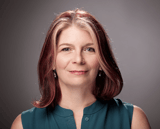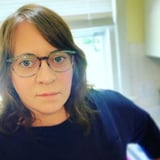Log in or create a free Rosenverse account to watch this video.
Log in Create free account100s of community videos are available to free members. Conference talks are generally available to Gold members.
Summary
Can a software only mobile solution outperform a pharmaceutical drug in clinical trials? Is it possible to create an app only available via a doctor’s prescription? The answer to both questions is a responding YES! In this webinar, Dan walked through several medical product case studies he has consulted on. The first is the WellDoc BlueStar solution for type 2 diabetes patients. BlueStar was the first instance of Digital Medicine invented. BlueStar received both an FDA class 2 certification and a prescription drug code for insurance reimbursement. Legally speaking this 100% software only solution is a medication. In clinical trials it has proven to reduce high-risk type 2 patients A1C levels by more than 1.8 points, outperforming many commonly prescribed medications. The second case study is Bigfoot Biomedical’s artificial pancreas for type 1 diabetics. It has completed its first clinical trial rounds but is not yet in the market. This solution uses an amazing combination of AI, big data and IoT embedded in the human body to automate insulin delivery 24/7. The primary UX resides on the patients’ phone. Interfaces for doctors and insurance companies will complete the end to end system experience including an innovative direct to patients supply chain. In addition to these amazing case studies this webinar described the similarities between digital medicine design and Enterprise UX. You will be surprised to see how much they have in common as well as what else you need to know to enter this cutting-edge UX domain.
Key Insights
-
•
Digital medicine apps like BlueStar are prescription-only and undergo FDA clearance, making them legally a pharmaceutical class.
-
•
Only a tiny fraction (about 0.01%) of diabetes apps are FDA-cleared to ensure clinical effectiveness.
-
•
BlueStar outperforms metformin in lowering A1C by about 2 points through data science and gamification.
-
•
Bigfoot’s artificial pancreas integrates continuous glucose monitoring with an insulin pump controlled by smartphone, allowing personalized insulin dosing.
-
•
Medical UX design involves multi-actor systems including patients, caregivers, doctors, payers, pharmacies, and must consider HIPAA regulations.
-
•
The onboarding and provisioning processes in medical software are far more complex than in enterprise software due to prescriptions, insurance, and regulatory needs.
-
•
Safety is always the top design priority in digital medicine, followed by privacy and usability.
-
•
FDA agile process is highly regulated and closer to waterfall with strong documentation and traceability requirements, especially for higher-risk devices.
-
•
Contextual data like elevation, temperature, and activity levels can personalize insulin dosing algorithms in digital medicine products.
-
•
User retention issues in medical apps can sometimes mean success, as patients stop using the app after achieving stable health control.
Notable Quotes
"Digital medicine apps are legally considered a pharmaceutical, available by prescription only."
"About 200,000 digital health products exist, but only 1% of 1% have FDA clearance for accuracy."
"BlueStar lowered users' A1C by 2 points, outperforming the most common drug metformin which averages 1.5."
"If the phone dies, Bigfoot’s insulin pump continues working independently, but without new data input."
"You have to keep the injection sites moving because of scar tissue, adding to the body hacking complexity."
"Safety is your number one concern, privacy is your number two, and usability is number three."
"A lot of these companies have founders or investors who are themselves doctors or diabetic patients."
"Design history files must document every design decision for FDA audits—it's far more rigorous than typical usability tests."
"The FDA-approved agile process is more like a controlled waterfall with strict traceability, especially for Class 3 devices."
"If patients stop using the app because they’ve got their health under control, that’s like a dating app success — they got married, not that the app failed."
Or choose a question:
















More Videos

"I believed we could do more — more for the company, customers, stakeholders, and ourselves if we had more agency."
Nalini KotamrajuResearch After UX
March 25, 2024

"The end of history illusion is that we think we're done evolving, but we vastly underestimate future change."
Dean BroadleyNot Black Enough to be White
January 8, 2024

"When we start changing our behavior, we start changing the voices and behavior around us."
Denise Jacobs Nancy Douyon Renee Reid Lisa WelchmanInteractive Keynote: Social Change by Design
January 8, 2024

"Focus groups build empathy by letting team members share their experiences in real time."
Kim Fellman CohenMeasuring the Designer Experience
October 23, 2019

"Why do designers decide how to design this? How do we wean design's addiction from whiteness?"
George AyeThat Quiet Little Voice: When Design and Ethics Collide
November 16, 2022

"You need to be the connector between people trying to drive decisions and others influencing them."
Nathan CurtisBeyond the Toolkit: Spreading a System Across People & Products
June 9, 2016

"Compass is a pretty frank place where people feel safe to speak their minds, even at leadership levels."
Greg PetroffThe Compass Mission
March 10, 2021

"Culture is the sticky glue holding us together but flexible enough to allow us to move in new directions."
Chloe Amos-EdkinsA Cultural Approach: Research in the Context of Glocalisation
March 27, 2023

"Having the qualitative and quantitative data together lets us tell a comprehensive story to stakeholders."
Mackenzie Cockram Sara Branco Cunha Ian FranklinIntegrating Qualitative and Quantitative Research from Discovery to Live
December 16, 2022
















